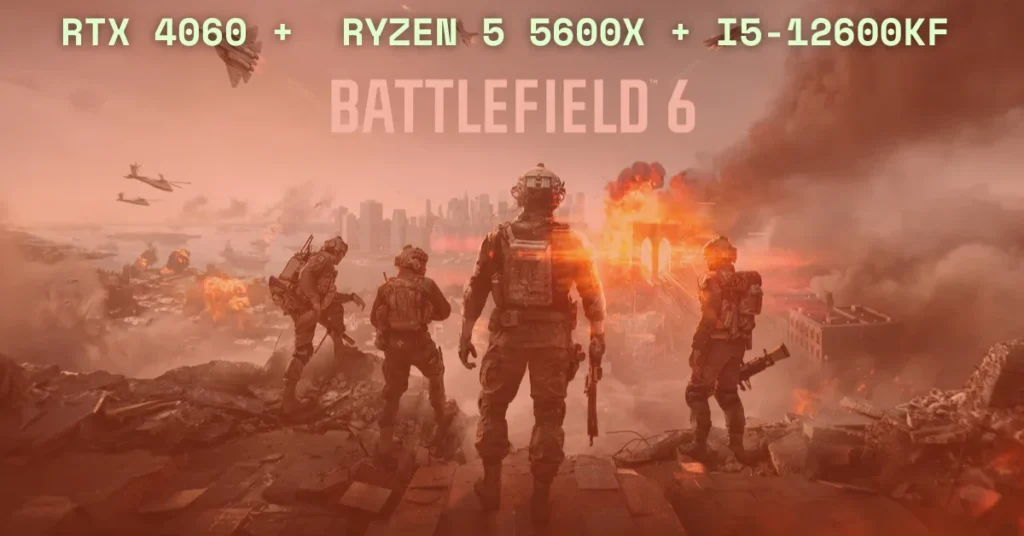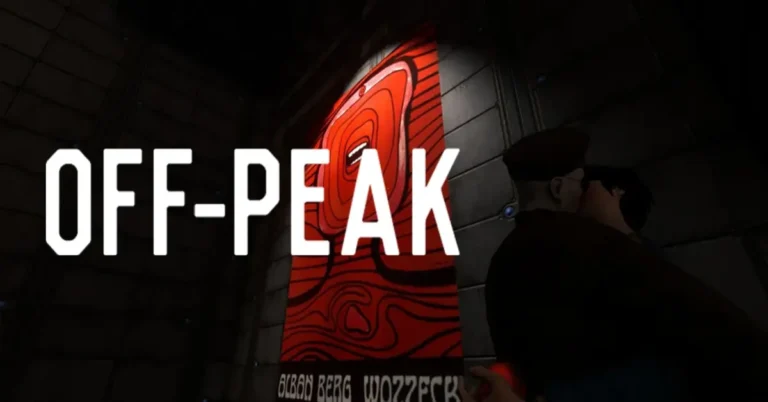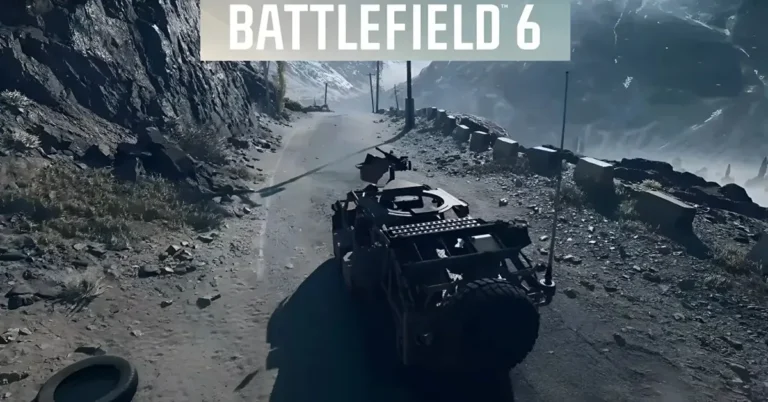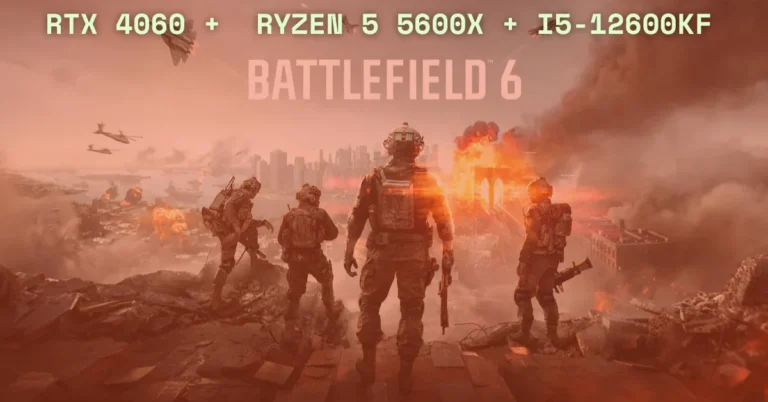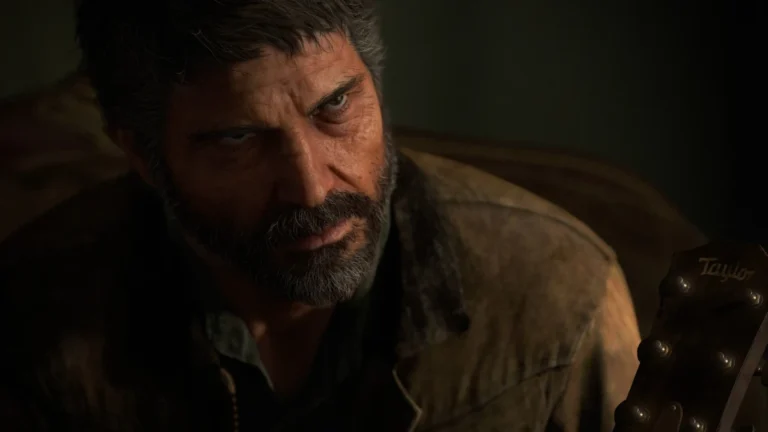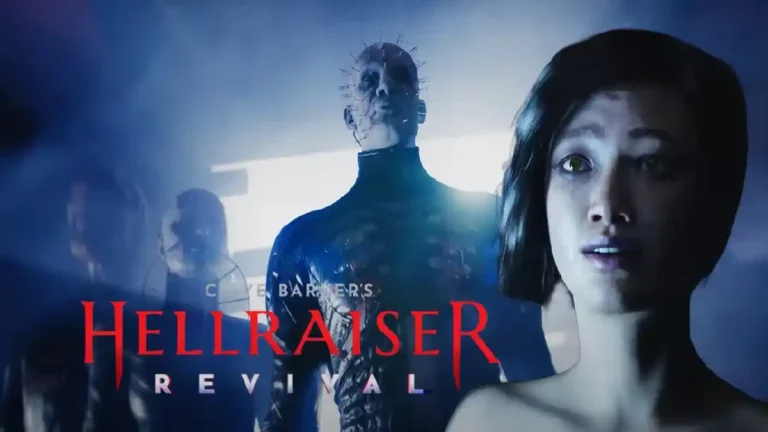I just wrapped up an extended session of the Battlefield 6 beta, and let me tell you—it was a blast. What really impressed me was how well the game ran on my mid-range PC setup. I’m using an NVIDIA RTX 4060 GPU paired with an Intel Core i5-12600KF, though you’ll get nearly identical performance with an AMD Ryzen 5 5600X. I also have 32GB DDR5 RAM in my system.
In this post, I’ll walk you through exactly how Battlefield 6 performs on this hardware combo. I’ll cover:
- The game’s optimization
- What settings deliver the best FPS
- How DLSS and Frame Generation Impact Performance
- Multiplayer performance
- 1080p vs 1440p benchmarks
- Thermal and power usage
- Final thoughts for anyone on a similar budget
Let’s get into it.
Why This Test Setup Matters
Battlefield 6 is shaping up to be one of the biggest releases of the year, and many gamers are wondering: Can the RTX 4060 actually handle it?
That’s a fair question. The RTX 4060 isn’t a flagship GPU, but with the right settings and smart feature usage (especially DLSS), it can definitely deliver a high-FPS experience—even in a chaotic battlefield environment.
Pairing it with a Intel Core i5-12600KF or AMD Ryzen 5 5600X hits that sweet spot of affordability and strong performance. These CPUs don’t bottleneck the GPU, especially in 1080p and 1440p scenarios.
Game Optimization: Surprisingly Good
Right off the bat, Battlefield 6 felt well-optimized.
Even during massive 64-player matches with explosions, vehicles, and weather effects going off everywhere, the game didn’t choke up. The engine feels like it has matured a lot since Battlefield 2042.
Load times were quick, and menu navigation was snappy. No weird lag spikes or stuttering when transitioning between cutscenes and live gameplay.
1080p Performance: High Frame Rates on Low Settings
For most of my testing, I stuck to 1080p resolution, since that’s still the sweet spot for competitive shooters.
Here’s how things looked:
- Low Settings (no DLSS): ~115–130 FPS
- Low Settings + DLSS Quality Mode: ~135–150 FPS
- Medium Settings + DLSS: 110–125 FPS
- High Settings + DLSS: Dips to 90–100 FPS during explosions
The best experience came from using Low settings with Textures bumped to High, plus DLSS in Quality mode. The visuals still looked clean, and it kept frame rates well above 120 FPS in most scenarios.
1440p Performance: Still Playable With DLSS
For gamers who prefer a sharper look, I switched over to 1440p.
This is where DLSS really saves the day:
- Low Settings + DLSS Quality: ~105–120 FPS
- Medium Settings + DLSS Balanced: ~95–110 FPS
- High Settings + DLSS Performance: ~80–95 FPS
In quieter indoor sections, frame rates were even higher. For wide-open vehicle warfare, it held pretty steady with DLSS helping maintain that smoothness.
I’d definitely recommend 1440p only if you use DLSS—native 1440p without upscaling dips hard, especially in large maps.
DLSS: A Game Changer
NVIDIA’s DLSS (Deep Learning Super Sampling) is a must for RTX 4060 users.
It boosts FPS significantly with very little hit to image quality—especially in Quality mode. I barely noticed any difference in texture sharpness or clarity, but saw 20–30% performance gains.
I tried turning it off just to compare, and instantly lost 25–35 FPS in the same scene.
Frame Generation: Not Worth It for Multiplayer
This is where things get interesting.
I experimented with Frame Generation, and while it did boost FPS numbers, it came at a cost—input latency.
It might be fine for casual play or campaigns, but in multiplayer, I felt a slight delay between aiming and shooting. That was enough to throw off my muscle memory in gunfights.
My verdict: Skip Frame Generation for competitive matches.
Anti-Aliasing and Image Sharpening Tips
Battlefield 6 lets you toggle a few options here that can noticeably impact both performance and clarity:
- AA Mode: LAA (Low-overhead Anti-Aliasing) worked best
- Sharpening: Set to medium for balance
- Film Grain: Turned off for clarity
- Motion Blur: Disabled completely
These small tweaks helped visuals stay crisp without eating frames.
Texture Settings: Crank Them Up
This might sound odd—but even at Low overall settings, I was able to push Texture Quality to High without affecting FPS much.
The RTX 4060 has 8GB VRAM, which is enough for high-resolution textures in this game at 1080p and even at 1440p with DLSS.
Maps looked much better with sharp debris, grass, and character details, without hurting frame rates.
Multiplayer Testing: Big Maps, Big Explosions, Still Smooth
I tested both Conquest and Breakthrough modes with 64 players. These are the most demanding multiplayer modes with tons of simultaneous action.
Even when everything was going crazy—tanks firing, jets flying overhead, and teammates reviving left and right—my frame rates held strong.
- Conquest 64-player match (1080p Low + DLSS Quality): 120–135 FPS
- Breakthrough 64-player (1440p Low + DLSS Quality): 100–110 FPS
- Downtown map with rain and fog effects: slight dips to 95 FPS, but stable
No crashes, no stuttering, no issues.
Power Draw and Temperatures
Here’s what my system looked like under full Battlefield 6 load:
- RTX 4060 Power Usage: ~120W
- CPU Usage (i5-12600KF / Ryzen 5 5600X): ~55–70%
- GPU Temps: Hovered around 65–68°C
- CPU Temps: Stayed below 75°C (with a mid-range air cooler)
The whole system pulled about 230–250W total, which is great. No PSU stress or excessive heat—makes it easy to build a compact or budget-friendly rig.
Ray Tracing? Forget About It
Let’s be real—Ray Tracing isn’t worth it on the RTX 4060 for this game.
Turning it on tanked FPS by nearly 40%, and the visual difference wasn’t game-changing. Battlefield 6 already looks great with rasterization and DLSS. Unless you’re benchmarking for fun, leave it off.
Best Settings Recommendation for This Setup
If you’re running an RTX 4060 + Intel i5-12600KF or Ryzen 5 5600X, here’s the sweet spot I found:
- Resolution: 1080p for highest FPS / 1440p with DLSS for sharpness
- Overall Settings: Low
- Textures: High
- DLSS: On (Quality Mode)
- Frame Gen: Off (for multiplayer)
- AA: LAA
- Sharpening: Medium
- Motion Blur & Film Grain: Off
This combo gives you a smooth, clean, high-FPS experience with no hiccups.
Should You Upgrade to Play Battlefield 6?
If you’re sitting on an older GTX 1060 or RX 580, and wondering if the RTX 4060 is worth the jump, it is.
Combined with a mid-tier CPU like the i5-12600KF or Ryzen 5 5600X, you’ll be able to play Battlefield 6 competitively, smoothly, and with room to tweak visuals.
And if you already own this combo, you’re good to go—no upgrades needed.
Final Verdict: RTX 4060 is a Great Choice for Battlefield 6
Battlefield 6 feels like it was built with mid-range gamers in mind. And that’s rare for AAA multiplayer shooters in 2025.
The RTX 4060, combined with either the Intel i5-12600KF or Ryzen 5 5600X, delivers surprisingly great performance, even on large multiplayer maps. Thanks to DLSS and proper optimization, the game looks good and runs even better.
This setup strikes the perfect balance between cost, performance, and future-proofing for 1080p and 1440p gamers.

